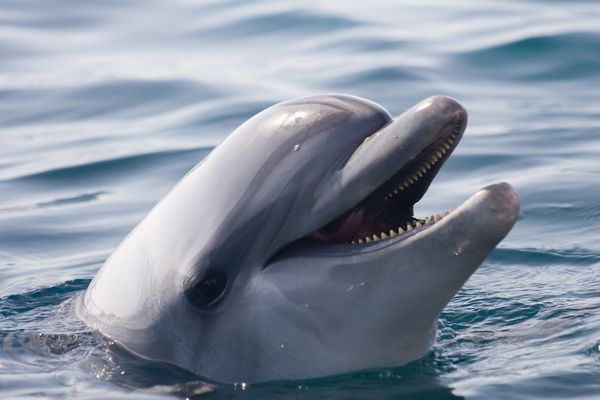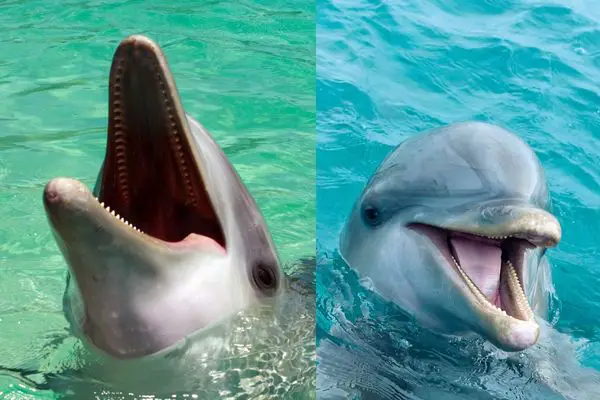Dolphins are some of the most fascinating creatures in the ocean, with a wide range of adaptations that allow them to survive and thrive in their aquatic environment. These adaptations can be divided into three categories: behavioral, structural, and physiological. Behavioral adaptations include echolocation, social behavior, hunting strategies, and migration patterns. Structural adaptations include a streamlined body, blubber layer, dorsal fin, flippers, tail fin, blowhole, and teeth. Finally, physiological adaptations include underwater vision, lung capacity, oxygen storage, thermoregulation, salt regulation, and sonar. In this blog post, we will explore each of these adaptations of dolphins in detail, discussing how they allow dolphins to live and thrive in the ocean. Whether you are a marine biologist or simply curious about these amazing animals, read on to learn more about the fascinating adaptations of dolphins.
Adaptations Of Dolphins
Behavioral Adaptations Of Dolphins
Dolphins are highly intelligent and social marine mammals that have developed numerous behavioral adaptations to help them thrive in their oceanic habitats. Here are some of the most important behavioral adaptations of dolphins:
Echolocation:
Dolphins use echolocation, a biological sonar system, to navigate and locate prey in their environment. They emit high-frequency sounds and listen for the echoes that bounce back off objects, allowing them to create a detailed map of their surroundings.
Social behavior:
Dolphins are highly social animals that live in groups called pods. They use various vocalizations to communicate with one another and work together to find food, care for their young, and defend themselves against predators.
Hunting strategies:
Dolphins have developed unique hunting strategies to catch their prey. For example, some species work together to create a circle of bubbles that traps fish, while others use tail slaps to stun their prey.
Speed and agility:
Dolphins are incredibly fast and agile swimmers, allowing them to evade predators and catch prey. They can swim at speeds of up to 60 km/h and leap up to six meters out of the water.
Sleep patterns:
Dolphins have adapted to sleep with one hemisphere of their brain at a time, while the other remains alert. This allows them to rest and avoid predators while still being able to surface for air.
Migration patterns:
Some dolphin species migrate long distances in search of food or breeding grounds. They use ocean currents and other cues to navigate their way across the open ocean.
Play behavior:
Dolphins engage in play behavior, such as surfing waves, jumping out of the water, and playing with objects. This behavior is thought to help them practice hunting techniques, bond with other dolphins, and relieve stress.
Structural Adaptations Of Dolphins
Dolphins have several structural adaptations that enable them to survive in their aquatic environment. Here are some of the most important structural adaptations of dolphins:
Streamlined body:
The dolphin’s body is streamlined, which allows it to move through the water with minimal resistance. Their bodies are fusiform, which means they are shaped like a torpedo, with a narrow head and tapered tail. This shape helps to reduce drag and increase swimming speed.
Blubber:
Dolphins have a thick layer of blubber, which provides insulation and buoyancy. The blubber also serves as a source of energy during periods of fasting.
Dorsal fin:
The dorsal fin is a stiff, upright structure on the dolphin’s back. It helps to stabilize the dolphin while swimming and is used for communication and courtship displays.
Flippers:
Dolphins have two flippers, one on each side of their body. The flippers are used for steering, turning, and braking.
Tail fin:
The tail fin, or fluke, is the dolphin’s primary means of propulsion. It is composed of two lobes that can move independently of each other, allowing the dolphin to swim with great speed and agility.
Blowhole:
Dolphins breathe air through their blowhole, which is located on the top of their head. The blowhole can be opened and closed quickly, allowing the dolphin to take a breath and then dive back underwater.
Teeth:
Dolphins have sharp teeth that are adapted for catching and eating fish and other small marine animals. Their teeth are not used for chewing, but for grasping and tearing prey.
Physiological Adaptations Of Dolphins
Dolphins have several physiological adaptations that allow them to survive in their aquatic environment. Here are some of the most important physiological adaptations of dolphins:
Underwater vision:
Dolphins have an excellent underwater vision, which allows them to see and track prey in the water. They have a special layer behind their retina called the tapetum lucidum, which reflects light and enhances their vision in low-light conditions.
Lung capacity:
Dolphins have a high lung capacity, which allows them to hold their breath for extended periods. They can stay underwater for up to 15 minutes while diving, depending on the species.
Oxygen storage:
Dolphins have a higher concentration of red blood cells and a larger blood volume than land mammals. This allows them to store more oxygen in their body, which they can use when they are diving underwater.
Thermoregulation:
Dolphins are warm-blooded animals that can maintain a constant body temperature despite the surrounding water temperature. They have a thick layer of blubber that insulates them from the cold water, and they can also regulate blood flow to their skin to conserve heat.
Salt regulation:
Dolphins live in saltwater environments and must regulate the amount of salt in their body. They have specialized kidneys that can excrete excess salt, and they also obtain freshwater from their diet.
Sonar:
Dolphins use echolocation, or biological sonar, to locate prey and navigate underwater. They emit high-frequency clicks that bounce off objects in the water, allowing them to create a detailed map of their surroundings.
In conclusion, dolphins are remarkable creatures with a variety of adaptations that allow them to survive and thrive in the ocean. Their behavioral, structural, and physiological adaptations work together to help them navigate their environment, hunt for food, and communicate with each other. From their streamlined body and blubber layer to their echolocation and social behavior, each adaptation plays a crucial role in the dolphin’s survival. By understanding these adaptations, we can gain a deeper appreciation for these intelligent and fascinating animals. As we continue to study dolphins and their adaptations, we can also learn more about the complex ecosystems they inhabit and the challenges they face. With continued research and conservation efforts, we can ensure that these magnificent creatures will continue to thrive in the oceans for generations to come.







Leave a Reply